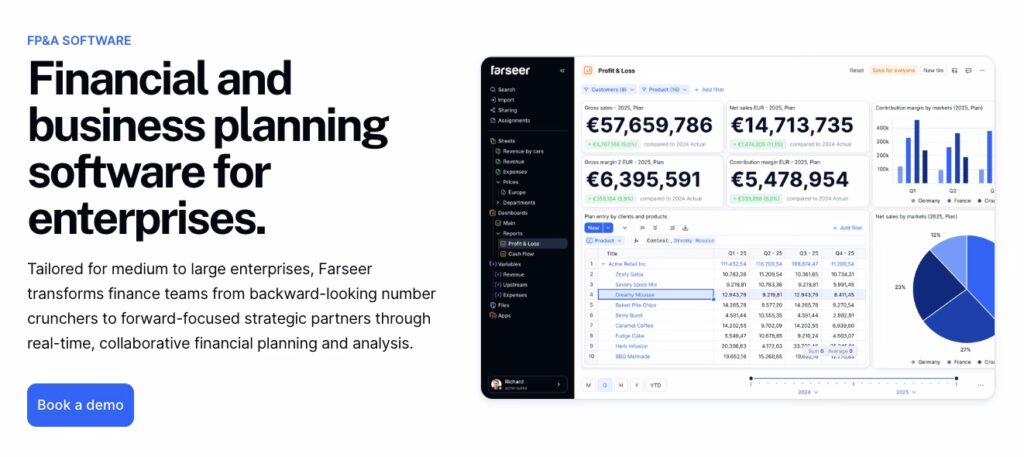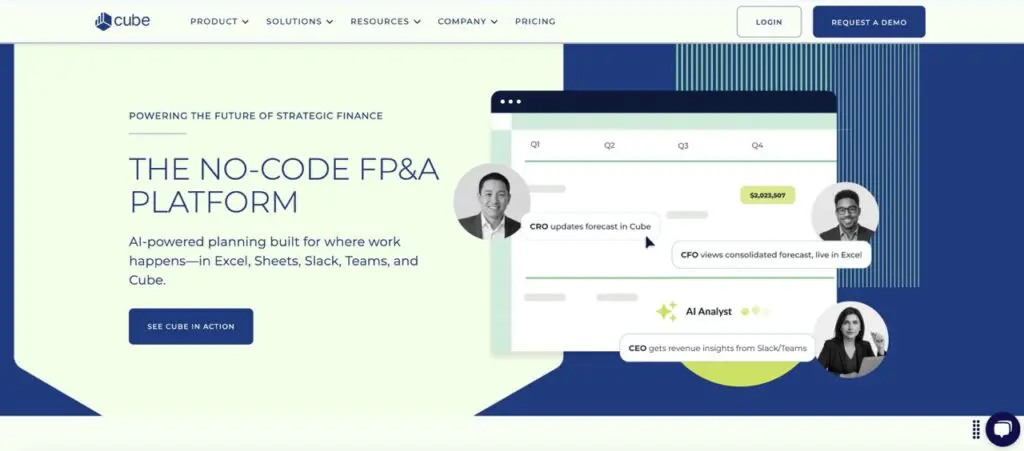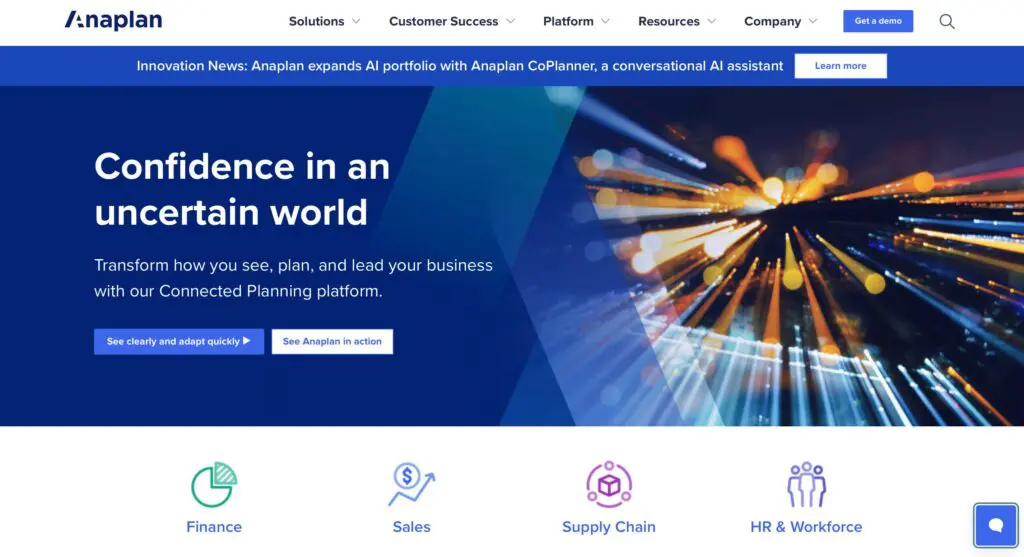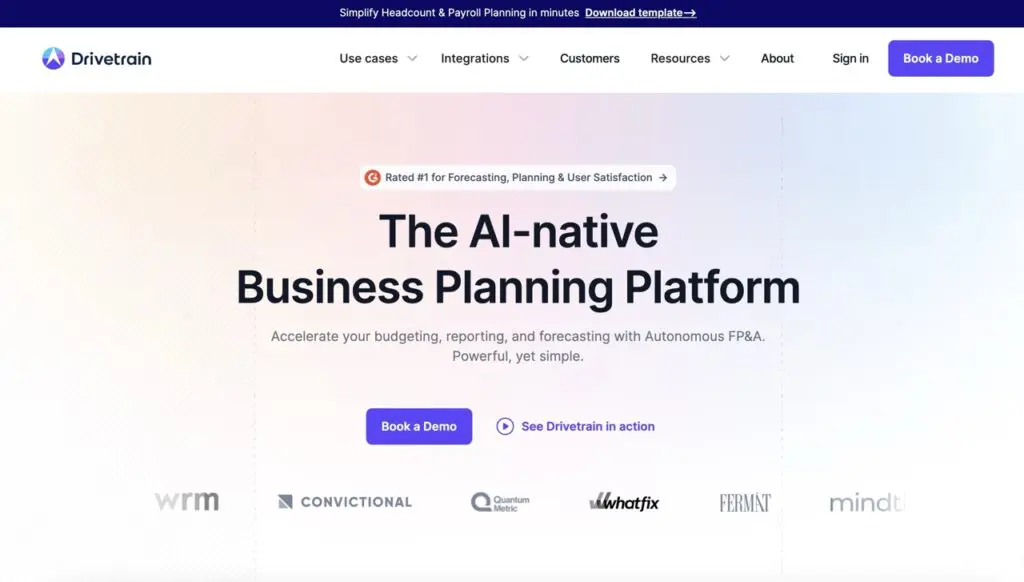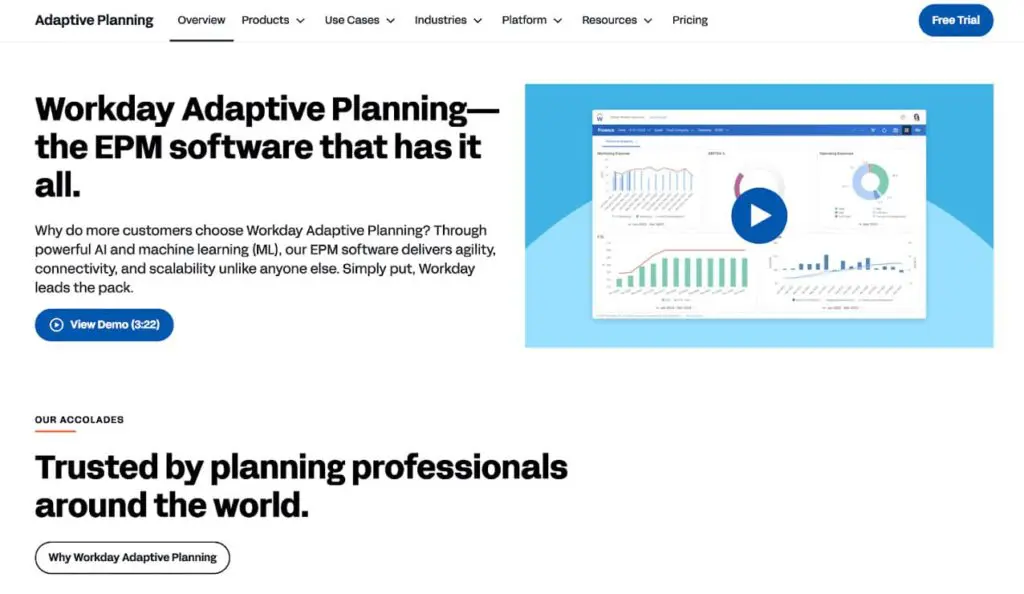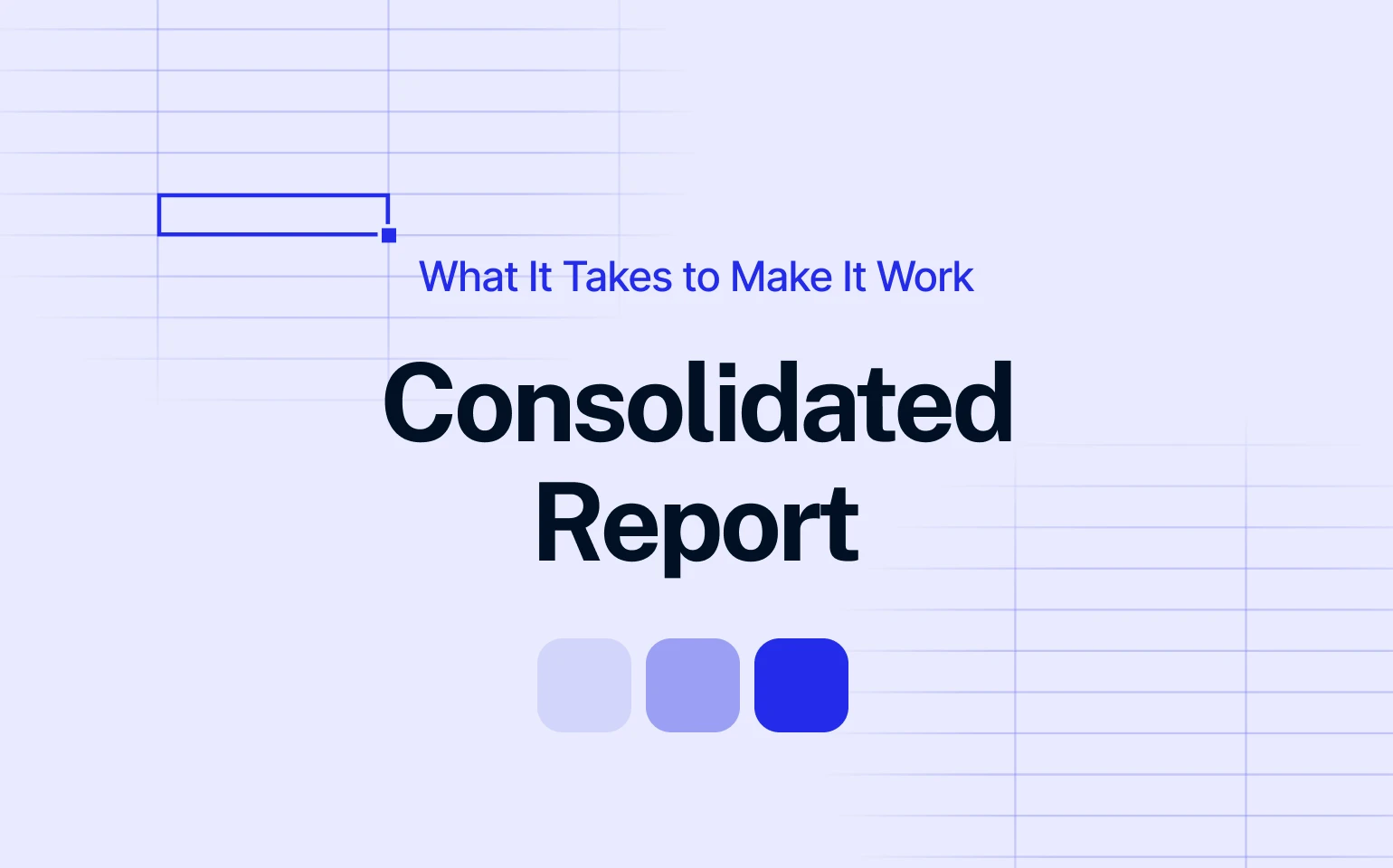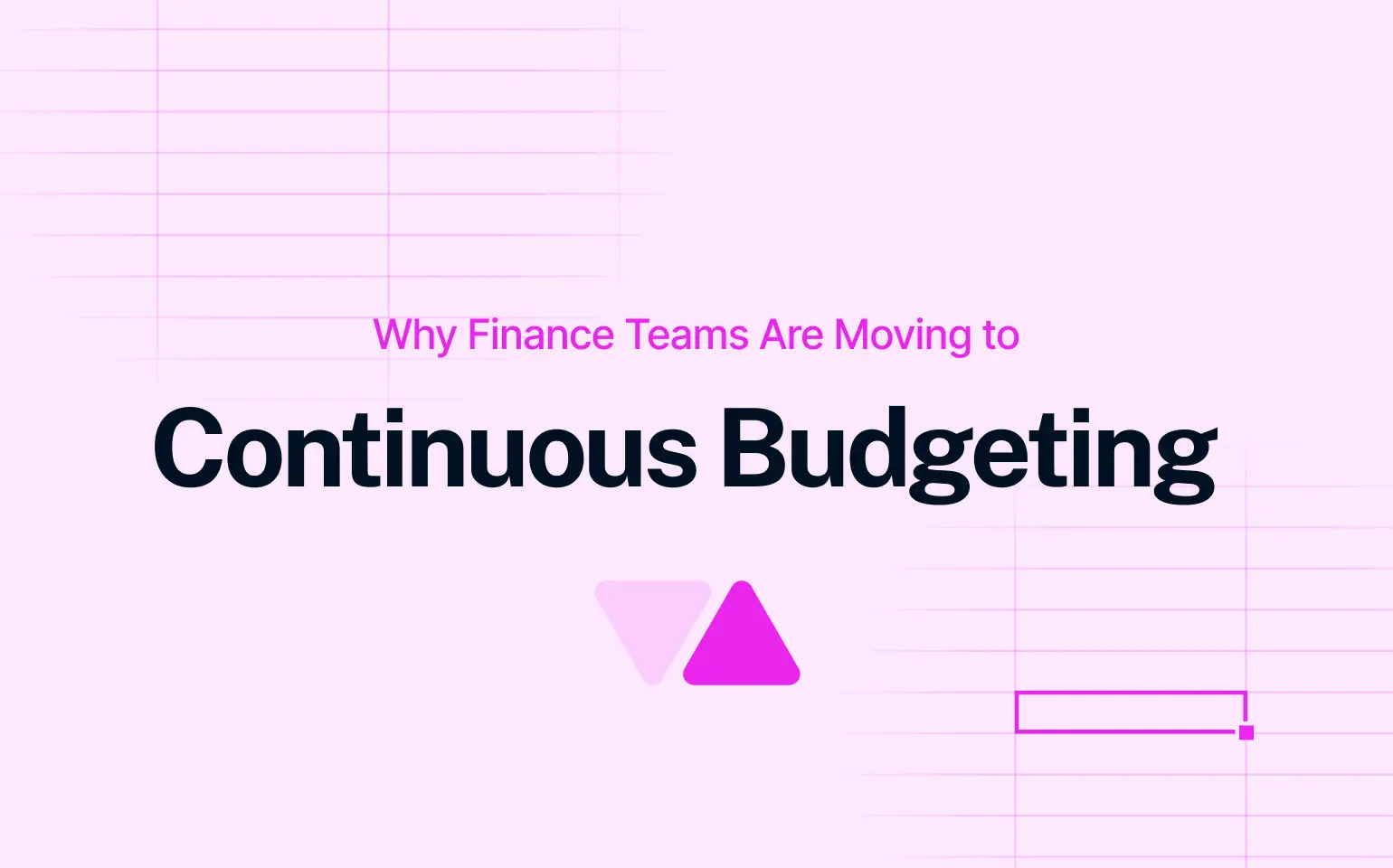Looking for Planful competitors?
Planful is marketed as a modern FP&A solution, but still for many finance teams, the day-to-day experience falls short. Especially for those in complex, multi-entity environments who need accuracy, speed, and intuitive workflows.
Why?
Well, here are some of the complaints that come up across platforms like G2 and Capterra:
- Slow data pulls and system lag: Users report that loading dashboards or running reports can be frustratingly slow, particularly at month-end.
- Excel-like modeling flaws: While Planful promotes spreadsheet familiarity, its reliance on formulas and cell references replicates many of the issues users hoped to leave behind: broken formulas, link errors, and version confusion.
- Clunky and outdated interface: The UI is often described as unintuitive or “2005-style,” requiring more clicks than necessary and slowing adoption across teams.
- Lack of forecasting automation: Planful lacks robust top-down or AI-driven forecasting, forcing teams to fall back on manual adjustments.
- Poor integration performance: Reviewers cite difficulties syncing with ERP systems or needing frequent IT involvement to troubleshoot integrations.
- Weak customer support: Some users mention slow responses or inconsistent support experiences, especially during implementation or upgrades.
- Steep learning curve: Initial onboarding and configuration is seen as time-consuming, with limited in-app guidance for new users.
These issues hit hardest for teams trying to modernize beyond Excel and need a reliable, fast, and collaborative planning tool.
In this blog, we break down the top Planful competitors, based on firsthand experience and market research, to help you choose a solution that matches the pace and complexity of your business.
Farseer - Built for High-Speed, Collaborative Financial Planning
Farseer stands out as the top alternative for companies that want to move away from fragmented Excel planning while keeping flexibility and control. It’s specifically designed for mid-sized and large enterprises with complex cost structures, multiple legal entities, and a strong need for fast, frequent reforecasting.
Why finance teams choose Farseer
- Fast modeling and forecasting – Changes are calculated in milliseconds, enabling real-time scenario planning.
- No-code formulas – Domain experts (not developers) build and update models in plain logic, no scripting needed.
- Centralized planning – All plans, drivers, and reports live in a single source of truth.
- Excel-like interface, but smarter – Combines spreadsheet familiarity with database structure and full version control.
- Top-down & bottom-up planning – Enables simultaneous planning at group and unit levels, supporting dynamic driver-based modeling.
- Strong integration – Works well alongside ERP systems and BI tools; no need for double entry or manual reconciliation.
- Industry-specific use cases – Proven success in manufacturing, pharma, FMCG, and logistics sectors across Central and Eastern Europe.
- Quick implementation – Typically live within a few weeks, even in complex environments.
- Responsive support
Limitations
- Farseer is optimized for finance teams with complex planning requirements – companies with simple, static budgets may not use its capabilities to the fullest.
- Some of the more advanced planning features require a short learning curve, but most teams ramp up quickly with support from Farseer’s experienced consultants.
Vena - Excel-Powered Planning With Structure and Control
Vena, one of planful competitors is ideal for finance teams that want to keep using Excel but need more control, security, and collaboration than spreadsheets alone can offer. It adds a centralized database and workflow layer to existing Excel models, helping teams organize versioning, approvals, and access across departments.
Strengths:
- Native Excel interface – no need to retrain the team
- Strong template and workflow management for structured processes
- Built-in audit trails and access controls to improve governance
- Well-suited for companies that prefer to evolve existing Excel models instead of replacing them
Limitations:
- Still relies heavily on Excel plug-ins, which can slow performance and create maintenance issues
- Performance suffers with large, multi-dimensional models
- Limited flexibility for advanced forecasting or top-down planning compared to newer platforms
- Requires IT support for setup and integrations with source systems
- Reporting capabilities feel basic compared to platforms with native visualization tools
- Some users report slow support response and high services cost during implementation
Cube - Lightweight FP&A for Spreadsheet-Native Teams
Cube is a Planful competitor designed for finance teams that want to speed up planning and reporting without leaving Excel or Google Sheets behind. It connects your spreadsheets to a centralized database and automates data consolidation, version control, and reporting workflows.
Strengths:
- Native integration with Excel and Google Sheets
- Fast implementation (often within weeks)
- Easy to learn — no new modeling language or interface
- Real-time syncing of actuals and forecasts
- Good fit for teams in high-growth or decentralized environments
Limitations:
- Lacks built-in modeling capabilities beyond spreadsheet logic – all calculations happen in Excel or Sheets
- Limited forecasting automation, no top-down planning or driver-based modeling engine
- Not ideal for complex planning across multiple entities or cost centers
- Doesn’t replace Excel, just connects to it – Excel errors and formulas still persist
- Reporting and visualization capabilities are basic and often require external tools
- Some users report challenges with scalability as data and model complexity grow
Anaplan - Enterprise-Level Planning for Complex Models
Anaplan is built for large organizations that need to model complex, multidimensional business scenarios across departments. It’s used widely in enterprise finance, sales, and supply chain planning. With its proprietary modeling engine (Hyperblock), Anaplan supports high-volume, collaborative planning at scale.
Strengths:
- Powerful multi-dimensional modeling engine
- Flexible and configurable for large-scale planning use cases
- Strong support for cross-functional collaboration (finance, HR, sales, ops)
- Scalable across hundreds of users and business units
- Good for matrixed organizational structures with frequent scenario analysis needs
Limitations:
- Steep learning curve – requires users to learn Anaplan’s proprietary formula language (not Excel-based)
- High implementation costs – typically requires certified consultants and multi-month rollouts
- Limited self-service – finance teams often rely on internal model builders or external partners to make changes
- Slower adaptability for quick or ad-hoc planning needs
- Not ideal for smaller teams or companies without dedicated planning resources
- User interface is functional but less intuitive compared to newer, lightweight tools
Drivetrain - Modern, Real-Time Modeling With AI Assistance
Drivetrain, one of planful competitors, is a newer FP&A platform built for speed, collaboration, and ease of use. It removes the complexity of traditional planning tools by offering a no-code, logic-based modeling environment and native integrations with CRMs, ERPs, and data warehouses. It’s especially popular with finance teams in fast-growing SaaS, services, and tech companies.
Strengths:
- No-code modeling using plain-language logic (no Excel or scripting)
- Real-time updates across connected models and reports
- Built-in scenario planning and root cause analysis tools
- Fast onboarding (often live in under 6 weeks)
- AI-powered forecasting and anomaly detection
- Strong integrations with Salesforce, NetSuite, and Snowflake
- Clean, modern interface designed for business users, not just analysts
Limitations:
- Less suited for companies with highly customized or industry-specific workflows (e.g., manufacturing or pharma)
- Lacks deep financial consolidation features needed in multi-entity or IFRS reporting environments
- Reporting customization is more limited compared to BI tools or more mature FP&A platforms
- Smaller customer base compared to established vendors, so peer references may be harder to find in some industries
Workday Adaptive Planning - Robust Planning for Workday-Centric Organizations
Workday Adaptive Planning is one of Planful competitors aimed at large companies, especially those already using Workday for HR and finance. It provides structured, centralized planning across financials, workforce, and operations, with strong support for driver-based forecasting and workforce modeling.
Strengths:
- Deep integration with the broader Workday ecosystem (HR, finance, payroll)
- Reliable for workforce planning, headcount modeling, and OPEX forecasting
- Strong version control, audit trails, and access management
- Good enterprise reporting structure and dashboarding options
- Scalable across departments with workflow support for planning cycles
Limitations:
- High implementation and licensing cost, especially for companies not already using Workday
- Performance can lag with large, complex models
- Interface is functional but dated compared to newer platforms
- Less flexibility for ad-hoc planning or quick model changes
- Requires IT or Workday consultants for setup and ongoing changes—finance users typically cannot manage it independently
Choose a Planning Tool That Matches Your Complexity and Pace
Planful works for some, but many finance teams need more speed, flexibility, and ease of use. If you’re managing complex planning across entities or departments, the right tool should simplify – not slow you down.
Farseer stands out among Planful competitors by offering a strong balance: fast modeling, top-down and bottom-up planning, real-time collaboration, and an interface built for finance, not IT. It’s ideal for teams ready to move beyond Excel without losing control.

